#but we can have other english/popculture names!
Text
The fact that ”Lyly” can have a name day but i can’t because ”it’s not finnish name”
#but we can have other english/popculture names!#full offense but i’m pretty sure it is just racism#since orthodox and finland-swedish calendar’s have a nameday for ’’vera’’#but i’m neither#because how dare parents of karelian and russian origin name their child ’’vera’’ rather than ’’veera’’#just name ranting because constant comments about it#people straight up telling me to change it because ’’you are a finn’’#like thanks?
0 notes
Note
okay this is pretty random, but did you read / watch lotr? that post you reblogged about it being post-apocalyptic just stopped me dead in my tracks, i’m wondering if i should read / watch if after all these years haha i was pretty damn young the first time i watched the films and i haven’t read the books…
Aight so I grew up watching the movies, I came to the books much later. I actually started by reading the Hobbit and then watched the movies with my friends. I actually never finished reading any of the books til I took a 22 hour road trip and my buddy Will had library copies of the audio books.
I'm not actually the biggest fan of how Tolkien does fantasy, tbh. I was just discussing with @pigeontheoneandonly the other day how betrayed I felt discovering that their names were not Frodo and Sam, but that was his attempt at translating these languages into English for us. Not to butt heads with the big Tolkien fanboys out there, I do admire all the thought that went into his worldbuilding. But let's get my own struggles with reading Tolkien out of the way right now.
I don't know if I'd recommend reading the books. They are, by design, plodding and character driven. Plot happens at the speed of Hobbits crossing the mountains on foot. What I can and always will give the books is you get more of that sweet, juicy party interaction, and several of the more minor characters in the movies had their due from the novel stripped from them for expediency of story telling. Theoden got to steal Eomer's greatest speech from the novels, for example, and as my memory serves you get more of Faramir as well.
What I can tell you is that, in no small part because of Tolkien's work, most modern fantasy exists in a period of world thinning. Magic is draining from Middle Earth as the Elves leave, and as ages pass knowledge is lost. This sets the tone for most modern fantasy really, from popculture works like H*rry P*tter to Phillip Pullman's homage to Milton's Paradise Lost in the His Dark Materials Trilogy. Game of Thrones exists in a world were magic is scarce and Dragons are few and far between, same with Paloni's Eragon. More recently the Shania Chronicles does this too. Dragon Age is another great example: the Orlesian Empire and Tevinter Imperium are shrinking, and while that may be a good thing for humanitarian reasons we no longer live in the age of Andraste, where the maker intervened directly in mortal affairs.
Funnily enough, even eastern fantasy pulls from this. Think Neon Genesis Evangelion (sci-fi not fantasy, but what is sci-fi but fantasy reskinned?) or Princess Mononoke/Nausicaa and the Valley of the Wind. Truth be told, most fantasy authors use world thinning to make clear the stakes.
World thinning is also a great excuse for readers/characters to discover great archeological works. Places like the Great Pyramid, or Stone Henge, Machu Pichu, they leave us awestruck because it is unclear to us how such amazing things were accomplished. This sense of wonder, and at the ache for peoples and genius lost, is at the core of the fantasy genre.
In all seriousness, I'd encourage you to re-read/re-watch any fantasy and look for those moments. Many if not all of the best Fantasy stories will have this buried in the subtext. It plays on a very human nostalgia.
9 notes
·
View notes
Text
300 followers special: debunking Arahabaki
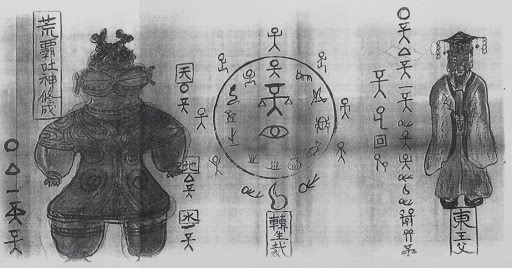
Arahabaki is a mythical figure with a relatively large popculture footprint, mostly thanks to Shin Megami Tensei, but little to no source material to go with it. For this reason, especially in english-speaking spheres, many claims rooted in pseudohistory and hoaxes, such as the image above, circulate uninterrupted. Under the cut, I will attempt to debunk their source. If stories about dogu, piss bottles and improbable journeys to Ecuador interest you, you found the right place.
The claims of Arahabaki's antiquity and in particular associating this obscure deity with dogu – specifically the shakoki dogu - all go back to Tsugaru Soto Sangunshi (I will refer to it as TSS in the rest of this article) and other associated writings, so called ”Wada family documents,” all of them written by a certain Kihachiro Wada. It's a series of forgeries created in the 1970s (with additional works produced through the rest of Wada's life – he passed away in 1999), which in addition to presenting a fictional history of the Tohoku region, centered around a fictional local kingdom, also mention Mayan prophecies, Nostradamus, Mu, and various scientific concepts, usually misunderstood by the author.
To my knowledge, TSS is only covered in one english language source, which is horrid and basically unusable - The Sacred Science of Ancient Japan: Lost Chronicles of the Age of the Gods by Avery Morrow, which does present the truth - eg. that it's a forgery - but then the author gets caught up in some sort of Evola-influenced spiritual doctrine which makes him claim that perhaps it's an echo of some "spiritual truth" or something along these lines, which is obviously not a sound argument from the perspective of anyone with even just a passing interest in history. Social sciences are still sciences, not religions.
TSS claims shakoki dogu represent an “outlawed” god formerly worshiped by people inhabiting Tohoku, whose name was also their endonym. It doesn't delve deeper into the history of Jomon art, and doesn't acknowledge dogu other than shakoki – considering not all dogu found in the Tohoku region (or even further north) belong to this category, it potentially makes it possible Wada was simply familiar with von Daniken’s confabulations and had no other exposure to jomon art; I have not seen this possibility in any japanese debunking articles, though. It's additionally worth noting here that while the exact purpose of dogu remains unknown up to this day, they're neither a taboo (indeed, many towns use peculiar locally excavated dogu as mascots nowadays, like Ravi from Minami Alps), nor particularly rare – estimatesof the number known today vary between 15000 (National Museum of Japanese History estimate) - 18000 (estimate from this article). The majority are of course not shakoki dogu; the difference between various estimates likely comes from different approach to counting figures only known from fragments.
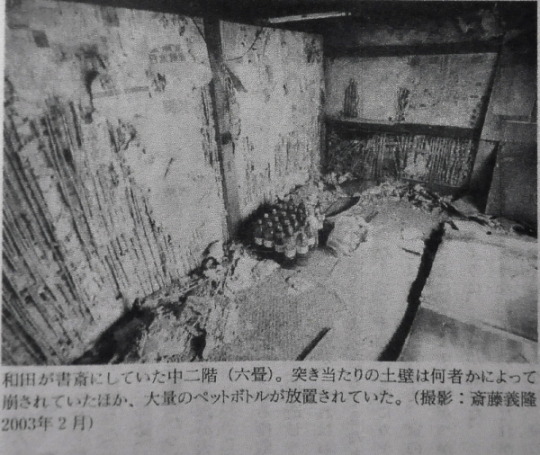
Wada claimed that he merely discovered TSS, rather than wrote it – according to his account, a case of old documents fell from the ceiling while his house was being renovated in 1948. Supposedly, the discovery – so called “Kansei original” - was compiled between 1789 to 1822, and then copied between 1870 and 1910. Wada later claimed he lost the original, but based on gathered evidence it seems obvious it never existed. Various pages known to researchers, purported to come from the original, the Taisho copy, and writing Wada confirmed to be his own, are written in the same style, and with the same mistakes. Additionally, as a visit made in the house by a debunker at the request of Wada's cousin, who appears to be its owner currently, confirmed it's virtually impossible that a large number of documents could have been stored above the ceiling; it has also been called into question if the house existed before 1950. What the visit did reveal was a large number of plastic bottles containing human urine, left undistrubed since the 1990s. A relatively unsophisticated way to make paper appear older than it is requires soaking it in urine, and this rather offputting find has proven that this was Wada's preferred method of making his writing appear older than it is to onlookers, especially these lacking formal experience with antiquities.
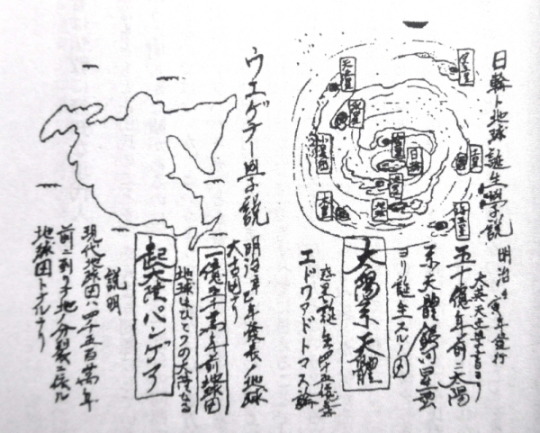
Truth to be told, even without the grand urine discovery, TSS was not difficult to discard as a forgery. As I mentioned above, its particular weakness are bizarre references to scientific concepts and discoveries, revealing a low level of historical awareness of the author – for example, references are made to quasars, continental drift theory and Pluto – discoveries not yet made in the suggested eras; to make it more embarrassing, TSS claims it was based on foreign sources which weren't yet published at the listed dates. It also references natural disasters which never happened, and urban legends and folklore which only developed recently, like the claims about Jesus' grave being located in Aomori prefecture, which only date back to the 1930s (Wada's documents claimed it was a story already known in the Kansei period, in the 1790s...). On top of all of this, a number of purported authentic illustrations were simply traced from contemporary sources:
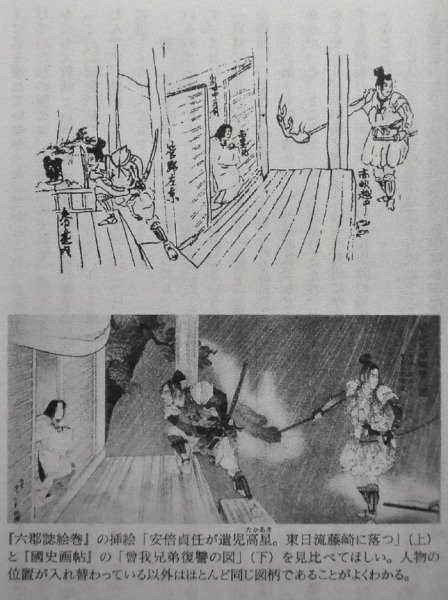
It's worth noting that TSS wasn't the only fraud Wada was involved in, as we can learn from his wikipedia biography he fraudulently claimed to be a former Imperial Palace escort officer before embarking on his adventure with crafting false chronicles soaked in urine.
Tragically, TSS found supporters not only among the expected crowd of various wannabe occultists, frauds and naive teenagers, but also among a number of genuine historians, most notably Takehiko Furuta. It would appear that he became interested in it in hopes of finding support for his theories about Japan originally having more than one ruling family, but with time he fully embraced it, and actively advocated the bizarre visions it contained. A particularly outlandish claim of his was insisting that Meiji era educator and political activist Fukuzawa Yukichi quoted TSS in his work (the quote in mention appears to be a paraphrase from american declaration of independence).
It's worth noting that while Furuta seemingly was a genuinely accomplished scholar of Shinran doctrine, supporting TSS was far from his only adventure with pseudohistory. He was also a staunch believer in the long discredited claims about links between japanese Jomon culture and the Valvidia culture of Ecuador, claiming that various references to fantastical lands lying between China and Japan or beyond Japan prove that the Japanese reached America in ancient times (you can torment yourself with one of such articles here). This theory was briefly advocated by a number of American scholars before him, but obviously has no support today. It's nothing but a new take on XVIIIth century French claims about present day British Columbia being the Fusang described in some Chinese texts. Sometimes strange lands and creatures at the edge of the map are nothing more but fantasy.
Furuta's particularly shameful contribution to TSS discourse was declaring that undermining its authenticity is rooted in historical prejudice against the inhabitants of Tohoku and Hokkaido. Personally I'm under the impression that discarding an entire region's real, very complex history in favor of fanciful hoaxes is much more likely to be rooted in such prejudice. The claim Arahabaki was an Ainu kamuy, common online, appears to come from a similar place – I will not examine it here, but I find attempts to shield forgeries from criticism by attaching them to poorly documented and historically suppressed beliefs of historically persecuted groups to be even more disgusting than regular fraud of this sort.
What Arahabaki actually is? This is difficult for me to tell for sure, but certainly nothing out of ordinary - not a dogu, and not the main figure of some lost fabulous country. There is a number of mundane temples enshrining Arahabaki, for example here. This article also mentions a number of mundane locations enshrining Arahabaki today; curiously, many of them are located outside Tohoku. A number of theories exist, linking Arahabaki to the usual suspects: religious beliefs of the Emishi people, who originally inhabited Tohoku, and may or may not be one and the same as ancestors of present day Ainu; snake worship; ironworking traditions; marebito beliefs; gods enshrined in freshly established fortresses... Whatever the truth is, it will inevitably turn out to be more interesting than hoaxes, as study of history generally proves.
285 notes
·
View notes
Text
PSO2 New Genesis Will Hopefully Be Much More Than a Visual Update
July 24, 2020 6:00 AM EST
Our hopes and fears for New Genesis, a new content update coming in 2021, promising to bring game system renewals to PSO2.
Phantasy Star Online 2 New Genesis is the new update coming to PSO2 in 2021, bringing with it a graphics update and a renewal of the game’s systems. The update celebrates the 20th anniversary of Phantasy Star Online.
Sega first revealed New Genesis during Microsoft’s Xbox Series X games showcase on July 23. Seeing it’s an update, not a brand-new game, PSO3, or anything like that, it’ll obviously be coming to the same platforms PSO2 is on, meaning Windows 10 and Xbox One, with an Xbox Series X version coming. This also means that in Japan though, New Genesis will be on PC, PS4, and Nintendo Switch via Cloud gaming. Note that the Japanese version of PSO2 on PC is very easily accessible in English thanks to fans.
I always wondered why Sega finally decided to officially release PSO2 outside Japan in 2020; nine years after the game’s first Closed Alpha Test in Japan. Now we all know why. PSO2 New Genesis definitely makes the game more beautiful, all while keeping certain visual elements for which PSO2 wouldn’t be PSO2, like the uncanny valley character faces. Players who unlike me, care about graphics, will definitely be appealed. However, I’m worried as to whether they will stick with the game once the initial sense of discovery and hype dies down, and I’m skeptical as to what this update will bring to PSO2 besides better visuals.
PSO2 New Genesis Reveal Trailer
youtube
If you already play PSO2, the Japanese version at least, you know the game is currently in Episode 6. Well, New Genesis seems pretty much to be Episode 7 except with a fancy name rather than the usual numbering. The Japanese press release also sells it as a “new game”, but it’s ultimately an update. An update which seems voluminous and promising.
Besides the graphical update, new content and game systems changes will be coming. The video hints that new classes will be added. Though rather than brand new classes, it looks like at least the three original classes of PSO2, Hunter, Ranger, and Force, are all getting newer versions with fancier movements. Most notably the jet-boots like things all characters seem to possess now, which allows for quick bursts of movement. Most enemies seems more imposing than before too, with a focus on fighting a single monster instead of a swarm. The original Phantasy Star Online on Dreamcast was one of the inspirations for Capcom’s Monster Hunter, which itself became an inspiration for many others. It seems like Sega is again throwing the ball back. Thorough the trailer, the combat actually doesn’t feel that much different from current PSO2 though.
Phantasy Star Online, Phantasy Star Universe, Phantasy Star Online 2, Phantasy Star Nova, and now PSO2 New Genesis.
I’ve entered the Phantasy Star Online series with its first entry in 2000, played every version barring Universe, and ultimately kept playing PSO Blue Burst on PC private servers till 2011. As such, I was pretty eager to get into PSO2 when it was announced, and started the game with the first Closed Alpha Test in August 2011. While I quickly noticed how different it is from PSO1, I still greatly enjoyed it. Overall, PSO2 greatly improved over the years. You wouldn’t believe how slow the characters’ running speed initially was. The game is a much better and pleasant experience now compared to its beginnings. And yet my excitement and enjoyment died down over the years, only playing to hangout with online friends, but ultimately taking an indefinite hiatus from the game since late 2018.
In my opinion, PSO2 has multiple problems, and they’re quite hard to explain as they only hit you once you’ve spent a considerable amount of time with the game. But one way to sum it up well is how it ultimately feels like the game controls your play schedule. Mainly because of the scheduled Emergency Quests every week, which are the most interesting and the most rewarding content. PSO2 ultimately decides for you when do you play, what do you play, and when do you stop playing. Overall, in my last months of playing PSO2, it often felt like a chore rather than a game, even without min-maxing or when trying to enjoy the game as a “casual” player.
Min-maxing in PSO2 is also not worth it as it’s incredibly costly, in time, money, and most possibly real money. The act of “Affixing” equipment in PSO2 feels like a gacha game inside the game, and can easily screw you over. PSO2 definitely changed as I’m talking from experiences from 2011 to 2018, but at the very least back then, I couldn’t think of any content that was worth min-maxing. As long as you and all the players you play with don’t get hit much and have good, up-to-date equipment, which isn’t too hard to get, you could clear any endgame content. Which in turn made the grind of repeating the same Emergency Quests and endgame content over and over all the more pointless. It’s ultimately not worth it unless you wish to brag by uploading videos on YouTube where you solo bosses planned for 12 players. (Technically you could do that even without min-maxing, but those are always timed battles, so even if you’re skilled enough to never get hit, you won’t beat the bosses without enough DPS.)
Another issue is how PSO2 often fails to keep older content relevant, and always keep adding more and more on top instead of improving preexisting elements. This also makes it hard for beginner players lacking knowledge, who could spend hours and hours running certain quests for rewards that aren’t actually “worth” anything. With better equipment available through easier means. I’m worried New Genesis might turn out to this same pattern all over again.
It’s worth noting PSO2 also has a pretty good story mode. With the addition of New Genesis, what will happen to all the previous PSO2 main story content? Will it be rendered unplayable, only reduced to a compilation of cutscenes? This already happened in the past, and I fear it might happen again.
If there’s one thing PSO2 excels at however, and what New Genesis will be improving, it’s being one of the best cosplay games there is.
One particular aspect PSO2 is very good for is being a cosplay and fashion customization game, and that’s definitely one of the points New Genesis will focus on. PSO2 already has very extensive character customization options, especially when it comes to female characters and mecha, seeing we’re talking about a Japanese otaku game here. Most hardcore players on PSO2 I knew weren’t spending hours and hours for the rare drops and weps, but to get enough money to buy the newest clothes for their 765 years old youkai loli character.
PSO2 also had numerous collabs in eight years, adding costumes and customization options from Sega franchises like Sakura Taisen but also dozens of iconic Japanese popculture elements from Eva to costumes designed by Suzuhito Yasuda. Again though, most of these are only obtainable through real-money gacha with abyssal drop rates, or by spending gigantic amounts of in-game money, buying from other players.

In any case, I strongly hope PSO2 New Genesis will try and bring some new solutions, instead of simply painting over mold. I have high hopes for the “system redesigning” it will bring. In Japan, PSO2 regularly has live streams detailing upcoming content, so we’ll learn more soon. While we’re moving to next-gen in the middle of a pandemic, with the world being in the weirdest place we’ve ever experienced, PSO2 will stay relevant in the world of free-to-play online JRPGs with gacha-like elements. It’ll definitely be a serious competitor to Genshin Impact and Blue Protocol.
July 24, 2020 6:00 AM EST
from EnterGamingXP https://entergamingxp.com/2020/07/pso2-new-genesis-will-hopefully-be-much-more-than-a-visual-update/?utm_source=rss&utm_medium=rss&utm_campaign=pso2-new-genesis-will-hopefully-be-much-more-than-a-visual-update
0 notes
Text
oh, hello there: an introduction
hey, tumblr!! my name is ash, and i’m new to the studyblr community [ but not to tumblr as a whole ] this is my first post, and it’ll serve as an introduction to me and my interests.
some basic points about me as an academic are listed in my mini biography in my sidebar, but there are other parts to me as well. for example, i’m an aspiring neurosurgeon, who’s definitely a perfectionist [ tbh it’s probably the reason i love me some aesthetic anything ] and is obsessed with all things science. i’m an enfj personality type, and a slytherclaw [ mostly slytherin though ;) ] i love reading, and my favorite books are harry potter, red queen, we were liars, the divine comedy, heartless and the princess saves herself in this one. i also enjoy beautiful handwriting, graphic design, photography, violin, tennis, and volleyball. in addition, although i’ve got a good vocabulary and grammar, and a great understanding of structure and literature, i’d like to work on my english skills. now that i’ve got that out of the way, i’ll say that i’m only fourteen, and i love shows like grey’s anatomy, pretty little liars, avatar and the good wife. harry potter is my life — hermione is my greatest icon. i also write on wattpad, where you can find me by the username mercurous. my greatest goal is to become friends with my inspirations, which i have succeeded in, on a small scale. a fun fact about me is that i have never taken tution. i’m indian by ethnicity, but american by citizenship. my first language is english, second hindi [ both of which i am fluent in ] and i’also, that i once loved math the very most, but recently math has taken a backseat to all forms of science and also social studies. i’m currently learning my third language, french. i know bits and pieces of other languages as well. my favorite brands include nike, adidas, urban outfitters, abercrombie and fitch, vs pink, lush, barnes and noble and apple [ obvi cause i’m just nerdy like that ] i’m single [ maybe crushing ] and i have a great set of great friends. i despise kj lip kits, don’t like or dislike the kardashians and am generally clueless about most popculture. my interests in music are generally darker or more electric themed, such as imagine dragons, kiiara, or m.i.a. but i also enjoy classic pop artists like shawn mendes and ellie goulding. i type in lowercase for sake of my own aesthetics. my dream home is new york, and although i was born and raised there, i’ve been living in india for the past couple of years. lastly, i’ve started this studyblr as a way to motivate me to push myself for even better grades and a more satisfying year, because as a freshman in high school, i know that every year from now on counts towards college.
so — this was a bit more essay like, and more formal than i would have liked but i guess it’s good practice ;) i hope after a while my posts/writing style will become more like it usually is, but oh well, i think this is an adequate representation of me in words.
3 notes
·
View notes
Text
Dogu and haniwa: what you need to know
Since every time haniwa come up in media there's a lot of confusion between them and dogu, and certain conspiracies and misconceptions start spreading over and over again, I figured I'll put together a primer of sorts explaining the differences between these two types of artifacts, as well as their popculture portrayals.
Dogu come from the Jomon period, the Japanese neolithic. Haniwa are much newer, only dating back to the Kofun period, which directly precedes the introduction of Buddhism to Japan in the 6th century. While continuity between certain Jomon artifacts and Kofun ones does appear to be a thing (this holds especially true for jewelry like earrings or comma-shaped beads, magatama), this isn't true for clay figures, with the style and purpose of dogu and haniwa having next to nothing in common.
Sensationalist online sources often present haniwa as an incomprehensible mystery, which isn't really true. Haniwa were occasionally discovered in the Edo period – commonly enough to become a mainstay of Japanese history books by the 1870s – but it doesn't seem they were ever considered much of a riddle. An encyclopedia from the 1870s, shown below, describes them alongside other historical pottery, and concludes they depict how people dressed in antiquity (a correct assumption; see here for some great reconstructions based on specific haniwa). The name “haniwa” comes from the Japanese chronicle Nihon Shoki, which describes them as clay figures placed in graves.
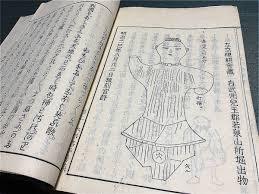
The first dogu excavation I could find information about dates back to 1886, with the majority only found within the last 80 years. The name “dogu” in theory can refer to any ancient clay figures, but in English and in the specific context of Japanese archeology it only refers to the Jomon figures.
Speculation about dogu is as mostly a product of modern scientific methods, and there's no dogu folklore to speak of. Most commonly dogu are thought to be votive offerings meant to heal specific injuries (many of them seem to be missing specific body parts or were damaged in some other way), fertility idols, depictions of deities or fantastical beings, or simply decorative items.
Dogu are, obviously, not a proof of alien encounters. This “theory” is the work of well known charlatan (also an embezzler and tax evader; notably not a historian or scientist, though) Erich von Däniken, and his claims about dogu don't even match factual records (for instance, the “goggles” dogu are only one type of the statuettes known; they are definitely the type most commonly depicted in modern media, though, with for example both Pokemon and Digimon featuring “goggles” dogu critters). As far as I can tell, this theory isn't even particularly popular in Japan. Instead, as far as fringe claims go, there's a forgery from the 1970s claiming a dogu was used as goshintai for a local god (obviously, there's no evidence for this claim, either). This shows up in popculture quite often, of course – SMT and Castlevania (and probably many other games I'm not aware of) feature a monster called Arahabaki directly based on the aforementioned forgery, and many history manga authors are keen on making various earthly gods from the Kojiki and Nihon Shoki resemble dogu. Hoshino's and Morohoshi's fictional depictions of the god Takeminakata are a notable example:
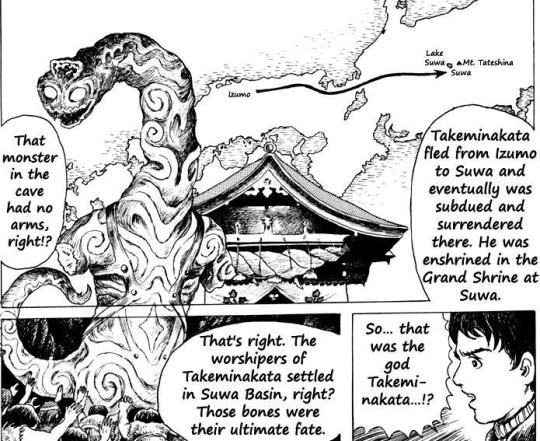
While as stated above the exact purpose of dogu is not known, we can pretty safely say what it wasn't. Haniwa are certainly funerary objects, and are generally found in burial mounds, but only 10 out of the over 18000 dogu known to us today were discovered at burial sites (source) – they tend to be among the most famous ones thanks to being better preserved than average, which might be what lead to the misconception dogu had the same purpose as haniwa. It makes much more sense to compare haniwa to the Chinese “tomb guardian beasts” (seen below) or even to the Terracotta Army.
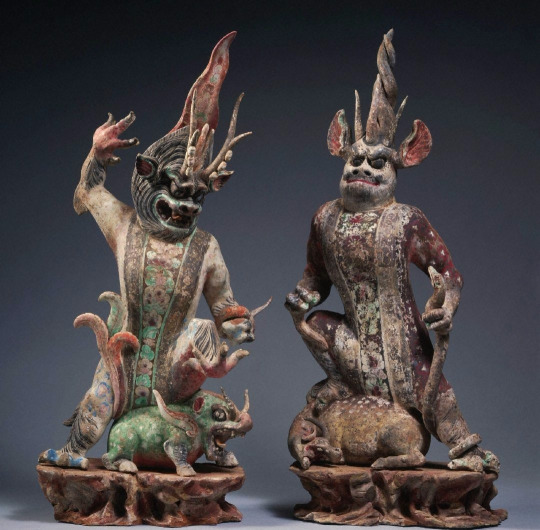
Thanks to the Animal Crossing gyroids, the most famous haniwa today are arguably the early, simplistic “dancers,” but in reality most of them are the more elaborate, more recent types: the “warriors”, “mediums,” “chieftains” as well as animal and house haniwa. For more information about the variety of haniwa forms see here.

Haniwa are not related to the god Haniyasu/Haniyamahime, though the area with the most Haniyasu shrines, the modern Fukuoka prefecture, is also known for particularly elaborate Kofun era burials. The Touhou depiction of Haniyasu as notably haniwa-like is not entirely baseless:
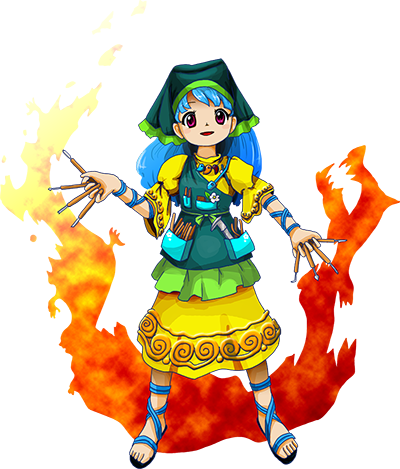
83 notes
·
View notes